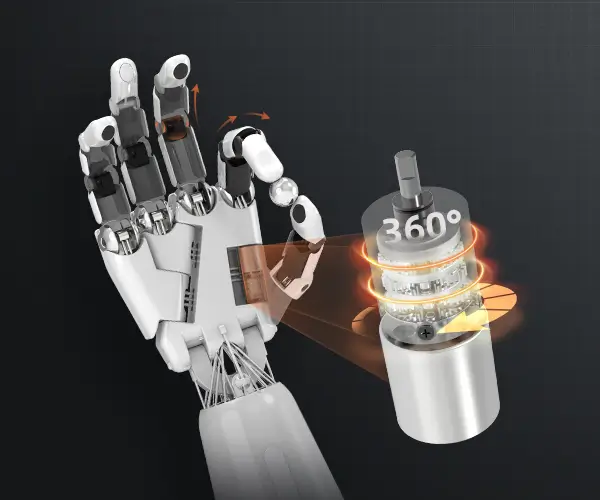Sure! Here's the first part of a captivating soft article on "micro servo motor robot." I'll provide the full content in two parts as requested.

In the rapidly evolving landscape of robotics, the allure of miniaturization continues to captivate engineers and enthusiasts alike. Among the myriad innovations fueling this revolution, the micro servo motor robot stands out as a beacon of ingenuity. Tiny yet powerful, these compact devices pack a punch, enabling robotics systems to perform with unprecedented precision and flexibility.
Imagine a robot so petite that it can weave through narrow crevices or perform delicate tasks with finesse — that’s the promise of micro servo motor robots. At their core, these miniature marvels are tiny servomotors meticulously engineered to provide precise control of angular or linear position, velocity, and acceleration. Unlike their larger counterparts, micro servo motors are designed to deliver high torque in a small form factor, making them ideal for use in small-scale robotic projects, wearable technology, and even biomedical devices.
The heart of a micro servo motor robot lies in the servo motor itself. Repurposed from traditional servo systems, micro variants incorporate advanced materials and miniaturized components, resulting in units that can fit comfortably into compact spaces while maintaining impressive performance standards. The motor’s core is typically a brushed or brushless DC motor integrated with a gear train, potentiometer, and control circuitry—the essential elements that facilitate precise positional feedback and control.
One of the defining features of micro servo motor robots is their ability to execute fine, controlled movements. This capacity hinges on a closed-loop control system that continuously adjusts the motor’s position based on feedback from the potentiometer. It’s this feedback loop that grants the micro servo its remarkable accuracy, enabling applications that demand meticulous movement control, such as robotic arms in surgical procedures, flying drones with agile maneuvering, or delicate interlocking mechanisms in miniature devices.
But why has the micro servo motor become such a popular choice in modern robotics? Part of the answer lies in its versatility and ease of integration. These motors are often designed as plug-and-play modules compatible with common microcontrollers like Arduino, Raspberry Pi, or more sophisticated embedded systems. Their straightforward interface, typically through PWM (pulse-width modulation), makes implementing complex control algorithms accessible even for beginners.
Moreover, the affordability of micro servo motors has played a significant role in democratizing robotics. Hobbyists, startups, and research institutions can now experiment with sophisticated robotic designs without prohibitive costs. The affordability does not compromise quality—advances in manufacturing have led to durable, reliable micro servos capable of enduring demanding environments and extended operational periods.
In terms of applications, the spectrum is broad and constantly expanding. Educational kits often include micro servo motors to teach principles of robotics, control systems, and mechanical design. In the medical field, miniature robotic devices powered by micro servos are used for minimally invasive surgeries, blood sample collection, and even targeted drug delivery. The consumer electronics sphere leverages micro servo motors in camera stabilization systems, humanoid robots, and smart home devices.
Perhaps most exciting are the emerging innovations that leverage the tiny scale of micro servo motor robots to create swarm systems. Imagine hundreds or thousands of these miniature robots working together seamlessly—performing environmental monitoring, search-and-rescue operations, or complex assembly tasks. The lightweight, low-power nature of micro servos makes dense swarms feasible, opening a new frontier in robotics research and practical applications.
However, challenges remain as well. Miniaturization can sometimes compromise torque, durability, or thermal management. Engineers continue to innovate with new materials, lubrication techniques, and control algorithms to overcome these hurdles. The ongoing development of high-quality micro servo motors, coupled with smarter control systems, promises a future where micro robots are more capable, adaptable, and autonomous than ever before.
In the next part, we’ll look deeper into innovative applications, cutting-edge developments, and what the future holds for micro servo motor robots. From their role in space exploration to their integration into our daily lives, these tiny but mighty devices are shaping the next chapter of robotics evolution.
Leveraging innovations in modular drive technology, Kpower integrates high-performance motors, precision reducers, and multi-protocol control systems to provide efficient and customized smart drive system solutions.




































